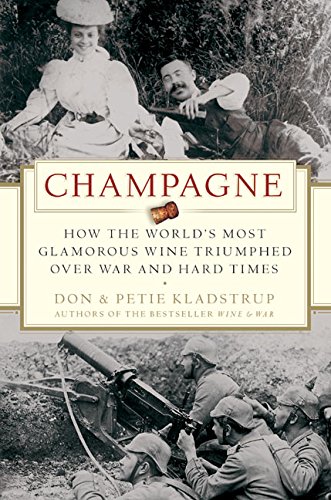

Most ebook files are in PDF format, so you can easily read them using various software such as Foxit Reader or directly on the Google Chrome browser.
Some ebook files are released by publishers in other formats such as .awz, .mobi, .epub, .fb2, etc. You may need to install specific software to read these formats on mobile/PC, such as Calibre.
Please read the tutorial at this link: https://ebookbell.com/faq
We offer FREE conversion to the popular formats you request; however, this may take some time. Therefore, right after payment, please email us, and we will try to provide the service as quickly as possible.
For some exceptional file formats or broken links (if any), please refrain from opening any disputes. Instead, email us first, and we will try to assist within a maximum of 6 hours.
EbookBell Team

0.0
0 reviewsFrom the time of Attila the Hun to
the Germans of World War II, waves of invaders
have tried to conquer the verdant region of
Champagne in northern France. Yet this strife-torn
land is also the birthplace of the world's favorite wine: champagne.
In this engrossing history, Don and Petie Kladstrup show how this sparkling wine, born of bloodshed, became a symbol of glamour, good times, and celebration. It's a story filled with larger-than-life characters:Dom Pérignon, the father of champagne, who, contrary to popular belief, worked his entire life to keep bubbles out of champagne; the Sun King, Louis XIV, who rarely drank anything but; and Napoleon, who, in trying to conquer the world, introduced it to champagne.
Then there were the generations of local vintners who struggled to keep their houses running. Claude Moët hauled his bottles to Versailles and gave Madame de Pompadour her first taste of bubbly, prompting her memorable quote, "Champagne is the only wine that lets a woman remain beautiful after she has drunk it." There was also Charles-Camille Heidsieck, known as "Champagne Charlie," who popularized champagne in America and ended up being imprisoned as a spy during the Civil War.
World War I would be Champagne's greatest test of all, a four-year nightmare in which nearly everything the Champenois had worked and fought for was destroyed "in a rain of iron and fire." German bombardment drove thousands of people underground to seek refuge in the huge cellars of the champagne houses, where among the bottles you would find schools, hospitals, shops, municipal offices, and troops.
Amazingly, grapes continued to be harvested even as bombs fell, and the wartime vintages are considered to be among the finest ever made.
An unforgettable history, Champagne will forever change how you look at a glass of bubbly.